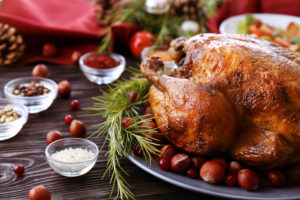- Stephanie Pillai, PA-C
Type 2 Diabetes Mellitus (T2DM) affects approximately 13% of U.S. adults, of which 27% are above the age of 65. T2DM is a condition in which the body is not able to effectively utilize sugar (glucose) for energy. It is caused by insulin resistance, a lack of insulin production, or a combination of both. Insulin is a hormone made by the pancreas which allows for glucose to move from the blood to the inside of the body’s cells to be used as fuel. In T2DM, cells no longer respond appropriately to insulin (insulin resistance) or the pancreas makes less insulin (lack of insulin production). Ultimately, this results in an increased blood glucose level. Prolonged increases in blood glucose levels can be associated with a number of complications, some of which include an increased risk of heart attack and/or stroke, decreased renal function and kidney failure, neuropathy, amputation, sexual dysfunction and blindness. The importance of blood glucose control cannot be emphasized enough with regards to reducing the risk of and preventing these complications.
The development of T2DM is closely associated with increased body weight, and diet and exercise are important components in the prevention and management of T2DM. Many individuals struggle with weight management, and there are numerous misconceptions that surround dieting and weight loss. Understanding these misconceptions and techniques for healthy weight loss is the key to continual weight management. Weight management needs to be thought of as a long-term habit, and it’s important to keep in mind that diets need to be sustainable. That being said, many people find healthy eating and dieting difficult – especially during the holidays. Understanding how different foods affect blood sugar will help to better choose healthy eating options.
Watch the Carbs
Carbohydrates are an important dietary factor with regards to T2DM. Carbs come in the form of dietary fiber and sugars. While dietary fiber is a beneficial source of carbohydrates, sugars are the main focus of carbohydrates in terms of weight management and blood sugar control in T2DM. Carbs are found in dairy, fruits, grains, starchy vegetables and added sugars to foods. There are some dietary guidelines that can be followed during the holidays to better sustain healthy eating habits and to allow for better blood sugar control in individuals with T2DM.
Be Methodical In How You Fill Your Plate
During holiday meals, consider using the “plate method” when filling your plate. With this method, half of the plate should be filled with non-starchy vegetables. These can include foods like roasted brussel sprouts or carrots, green bean casserole, or a zucchini and squash au gratin. One quarter of the plate should be filled with lean protein, which could include turkey or fish. The last quarter of the plate should be filled with grains or starchy vegetables, which can include a whole grain dinner roll, mashed potatoes, sweet potato casserole, or stuffing made with whole wheat bread. When planning holiday side dishes, consider using low-fat dairy products in preparations. You can also substitute olive oil for butter when cooking vegetables. The plate method will help to provide appropriate portion sizes and help to promote healthy eating during holiday meals.
Enjoy Dessert in Moderation and with Modifications
The amount of added sugars consumed is typically increased during the holidays, due to the plethora of cookies, chocolates, candies and pies that traditionally accompany these meals. While it is easy to say “skip the dessert,” it’s not so easy to actually do, especially during the holidays. When planning desserts for the holidays, consider using low-fat dairy products in dessert preparations. Fruits can also be used as substitutes for dessert toppings, rather than whipped cream or ice cream. If indulging in desserts, it’s important to do so in moderation. Rather than have a whole slice of pumpkin pie, opt for half a slice instead. If multiple dessert options are available, opt for a smaller portion of only one or two choices, rather than sampling all of the desserts available.
With these simple dietary recommendations, healthy eating during the holidays can be more manageable without having to forgo favorite holiday recipes and desserts.
View additional healthy holiday eating tips from the CDC.



